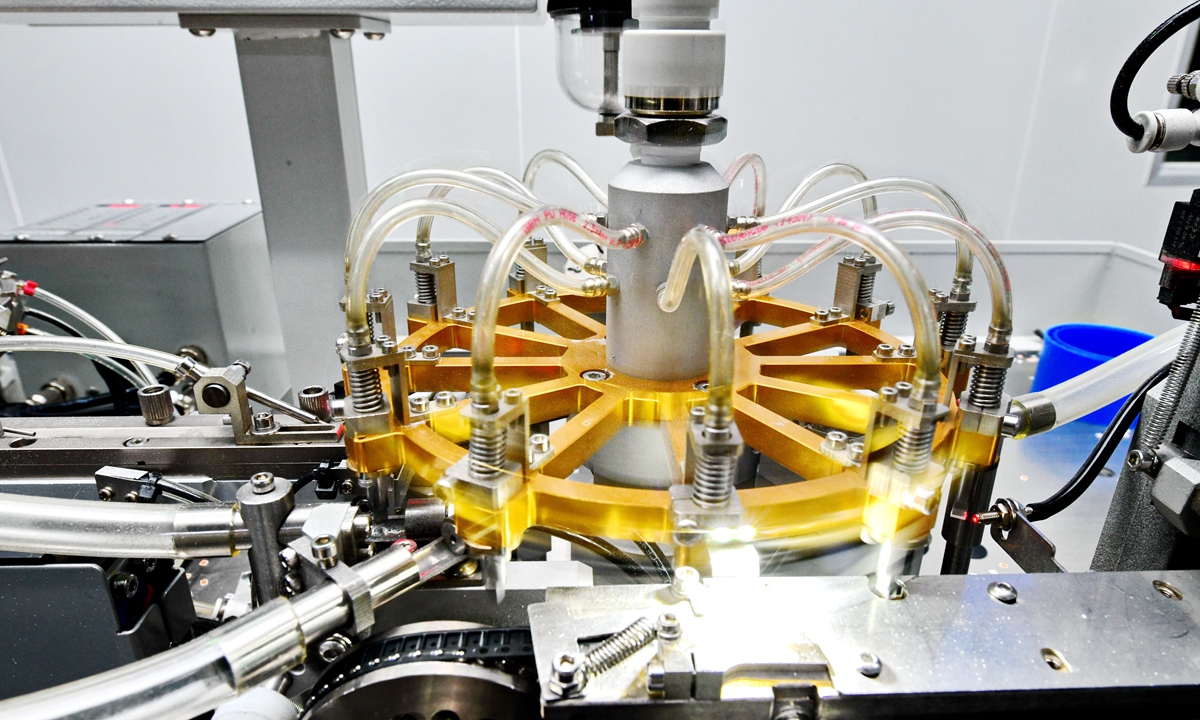GT Voice: India’s ambitions can foster complementarity with China
时间:2024-09-29 17:38:59 时尚

Manufacturing equipment Photo: VCG
There has been no shortage of pessimism regarding economic and trade relations between China and India, as Chinese companies are bearing the brunt of the most severe crackdown due to India's tendency to generalize security issues in its China trade policy. However, the latest data may indicate a different trend, serving as a reminder not to overlook the complementary strengths of both economies.
China again emerged as the largest trading partner of India in fiscal year 2023-24, Indian news agency PTI reported on Sunday. Bilateral trade stood at $118.4 billion, with India's exports to China up by 8.7 percent, according to economic think tank Global Trade Research Initiative (GTRI).
After the US became India's largest trading partner in fiscal years 2021-22 and 2022-23, this change in India's top trading partner status may come as a surprise to many, especially considering the tensions between China and India and the latter's scrutiny of Chinese companies.
This unexpected development underscores the potential for economic and trade cooperation between China and India, showcasing how the acceleration of the Indian manufacturing sector's development is leading to increasingly complementary economies.
For a long time, whether India could replace China as the world's factory has been a popular topic, but if you look at global industrial and value chains, India is not in the same segments as China. As India is seeking to become a manufacturing power, such a difference is poised to bring significant development opportunities for both nations.
China has a well-developed industrial system, solid manufacturing foundation and cutting-edge technologies in many areas, while India has advantages in the services sector, particularly in information technology services. With the implementation of the "Make in India" strategy, the country's needs for industrial chain support have increased, especially in technology- and capital-intensive products. This situation offers new market and collaboration prospects for China's manufacturing sector.
For instance, a study by the Indian Institute of Foreign Trade, a state-backed university in New Delhi, in April 2023 found that Chinese imports were boosting India's manufacturing and exports in key sectors, including inorganic chemicals, pharmaceuticals, iron and steel, the South China Morning Post reported.
Noticeably, over the years, some people in India have frequently criticized the country's trade imbalance with China, which may have had a negative impact on the development of bilateral trade. In fiscal year 2023-24, India's imports from China increased by 3.24 percent to $101.7 billion, while exports to China reached $16.67 billion, according to GTRI.
It's essential to attach great importance to this imbalance and find solutions to promote the healthy and long-term development of bilateral trade.
First and foremost, promoting the localization of Chinese companies in India is a crucial strategy to address the existing imbalance. By establishing production bases in India, Chinese companies can generate more employment opportunities and stimulate the growth of the local economy, ultimately aiding in the reduction of the trade deficit.
For instance, in India's rapidly expanding smartphone industry, only a small percentage of components are sourced domestically, with China continuing to dominate as the primary supplier for smartphone plants in the country.
Despite Apple's efforts to encourage its suppliers to invest in India, discriminatory economic and trade policies have dissuaded many Chinese component suppliers from doing so. Consequently, it is imperative for the Indian government to implement preferential policies and foster a favorable business environment to attract increased investment from Chinese companies.
In the meantime, China could gradually expand market access for Indian products, particularly in sectors like agriculture and services outsourcing.
Furthermore, both countries can enhance collaboration in science, technology and innovation, facilitating technology exchange and industrial advances through the establishment of joint research and development centers.
This initiative could incentivize companies from both nations to pursue partnerships in various fields, including renewable energy, information technology and other emerging industries, thus diversifying their trade structures and uncovering additional business prospects to mitigate trade imbalances.
It is sincerely hoped that by leveraging their complementary strengths and exploring opportunities for collaboration, China and India can forge a more stable and prosperous trade relationship that mutually benefits both nations.
最新文章